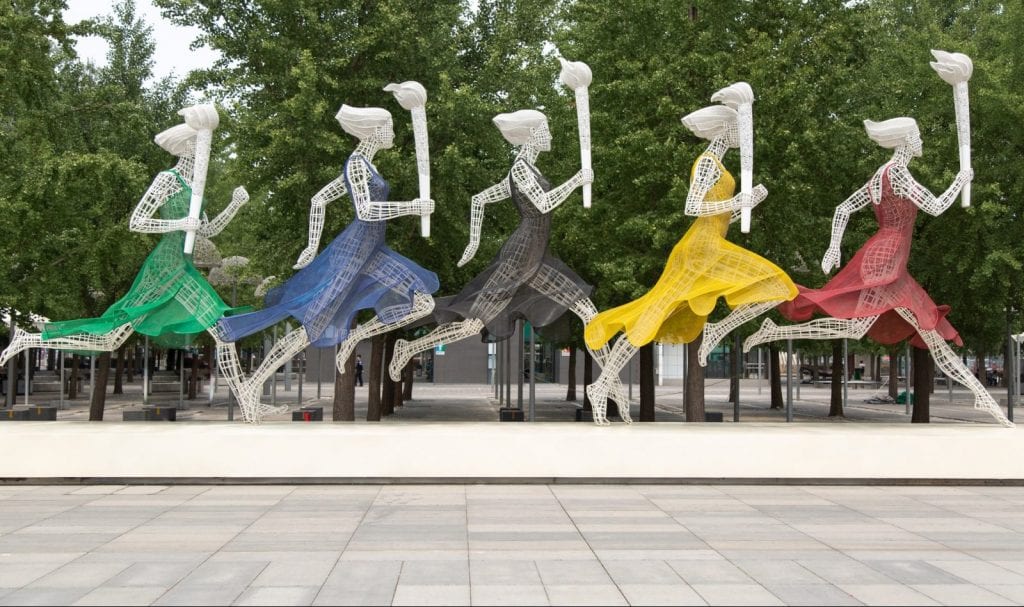Adidas appears to have backed down in one part of a bi-national trademark clash that pits it against fellow sportswear-maker Arc’teryx. On the heels of Arc’teryx’s owner Amer Sports Winter & Outdoor Company (“Arc’teryx”) lodging an opposition to block adidas’ attempt to secure a registration in the U.S. for the TERREX trademark for use in connection with retail store services featuring clothing, footwear, headwear, and bags, among other things, on the basis that the mark is likely to confuse consumers into believing there is a connection between the TERREX and Arc’teryx brands, adidas has opted to abandon its application for registration. The move brings part of a larger legal battle between the two companies to a close.
Some Background: On the heels of adidas opening a TERREX-branded store down the street from one of North Vancouver-headquartered Arc’teryx’s stores in Vancouver in early 2023, Arc’teryx filed a trademark infringement lawsuit against adidas in Canada, with its trademark registration for the ARC’TERYX word mark for use on retail store services serving as the basis for its infringement claims. In its February 2023 complaint, Arc’teryx alleges that adidas’ use of the word TERREX on the store’s signage and its proximity to the Arc’teryx store is enough to create “consumer confusion” between the two companies. The case is currently underway, with the Supreme Court of British Columbia siding with Arc’teryx early this year when it granted part of Arc’teryx’s bid for an interlocutory injunction to block adidas Canada from “using TERREX as the name of its retail stores” in Canada.

All the while, Arc’teryx and adidas have been at odds in the U.S. since at least August 2023 when Arc’teryx initiated the opposition at hand. As first reported by TFL, Arc’teryx claimed in furtherance of its opposition that by way of the TERREX mark, adidas is angling to use a “substantially similar” mark on services that are “identical or substantially identical” to the ones that Arc’teryx offers under its mark. The Canadian outdoorwear-maker argued that, among other things, that consumers are likely to believe the two companies are affiliated because “the pronunciation of ‘TERREX’ is identical to the pronunciation of the letters ‘TERYX’ in ARC’TERYX,” and at the same time, adidas “intends to use the [mark] on the same services as Arc’teryx,” including outdoor-specific clothing, footwear, and gear.
While the parties’ U.S. opposition clash is now seemingly behind them thanks to adidas’ decision to abandon its retail services-centric application for the TERREX mark, it is worth noting that adidas is not without other domestic registrations for TERREX. Interestingly enough, Arc’teryx did not take issue with adidas existing registration for TERREX for use on footwear, shorts, pants, t-shirts, vests, jackets, etc., which was issued to the brand back in 2009, or its pending application for registration for TERREX AX5 for use on footwear.
THE BIGGER PICTURE: Little more than a simple trademark scuffle on the surface, a closer look at the multi-pronged legal clash between adidas and Arc’teryx suggests that this is just as much a competition-centric squabble as anything else. In other words, the trademark fight seems to stem directly from increasing competition between the two companies, and in particular, adidas’ aim to amass a greater share of the outerwear market by doubling-down on the TERREX sub-brand that it first launched back in 2011.
From a sales standpoint, adidas’ efforts on this front make sense in light of growth in the outerwear market, which is expected to grow to $23.6 billion by 2031, according to one estimate. Such growth is being boosted by the technical needs of sporting, as well as more fashion-focused ones, as trends like “gorpcore” – which is seeing tech-driven outerwear being adopted as everyday-wear – continue to find fans. And not limited to the U.S., sales of outerwear offerings are growing globally, with the “upward demand” for products and services in China’s increasingly robust outdoor sports industry, for example, being particularly notable for brands looking to achieve international growth and bolster their bottom lines.
Hardly the only existing trademark clash that centers on heightening competitive concerns, the case that adidas waged against Thom Browne comes to mind here. Throughout that case, which adidas first filed against Thom Browne in a New York federal court in 2021, adidas has emphasized the increasing amount of competition between itself and Thom Browne as central to its trademark infringement and dilution claims. In short: Thom Browne’s use of a “confusingly similar” four-stripe motif is problematic in light of the high fashion brand’s increasing expansion into casual and activewear, per adidas.
While previously known for its signature tailoring, Thom Browne has been aggressively encroaching on adidas’ home turf (i.e., the sportswear market), including by way of an expanding collection of sports-related apparel and official deals with teams, such as European football club FC Barcelona, thereby, giving rise to a greater chance that consumers seeing Browne’s 4-stripe mark will be confused. (It is worth noting that a jury sided with Browne in January 2023, and the parties are in the midst of an appeal.)
And while rising – or more direct – competition between two parties prompting trademark-centric squabbles is not a novel phenomenon by any means, it is worth noting that as a growing number of companies branch out into new markets (or additional areas within their general market), we may see more cases like this one.











